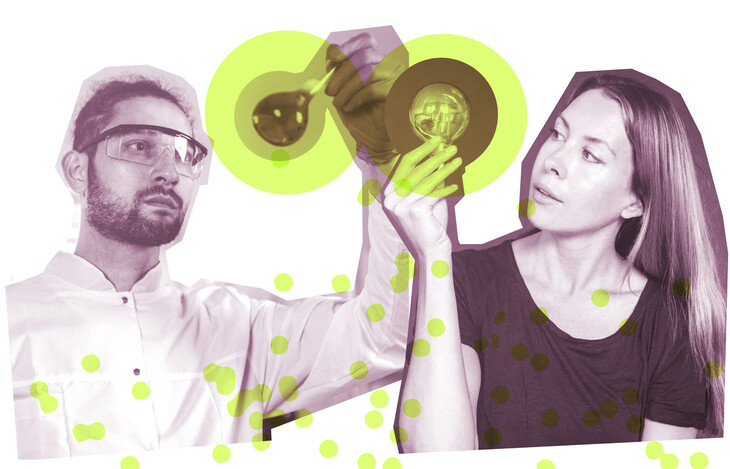What is the role of collective intelligence in the research lab, from formula to concept to product?

Innovation is not limited to isolated technical solutions. It emerges from complex interactions between humans, non-humans and socio-technical networks.
Twisting operates within innovation departments to analyze and activate the conditions for the socio-technical appropriation of an invention. For example, within the innovation department of the L'Oréal group:
3 years
support from the Innovation Division
20
Thematic workshops (category, science)
100h
Coaching to enable teams to adopt feedback-validated experimentation methods
Context
The L'Oréal group has an event, the "pipe", which allows its researchers to present their inventions and innovations to the brands in charge of bringing them to market. L'Oréal's innovation division asked Twisting to evaluate the event.
Retex
Two sociologists interviewed 25 employees from different brands and internal roles. Semi-structured interviews via Teams were not recorded for reasons of confidentiality. Feedback was anonymized.
« Pipe » perception
The Pipe is perceived by its stakeholders as a place where inventions are transformed into innovations that can be appropriated by business. Expectations include security, transparency, and a consumer- and trend-focused approach.
Challenges and expectations
Pipe customers, the brands, expect ready-to-market innovations, realistic costs and compatibility with various constraints. Expectations vary from brand to brand, with some demanding exclusivity.
Lines of improvement
Brands wanted more experience and collaboration in the Pipe process. Lines for improvement include experimentation with innovation and workshops to enrich exchanges.
The question then emerged as to what kind of collaboration is possible outside this institutionalized time of exchange. But how can we create a fertile ground for collective intelligence when cultures (geographical, scientific, professional) are different and distributed?
When there's a real problem of time and space: 5 zones/time slots, days already overloaded with meetings.
÷3
of project time
Benefits
Increase cross-zone, cross-domain, and sometimes cross-category collaboration.
Marketing appropriation facilitated by upstream integration.
Project time cut in thirds: a project that used to take 9 months to be shared, distributed and enriched across the organization now takes 3 months when the protocol is applied.